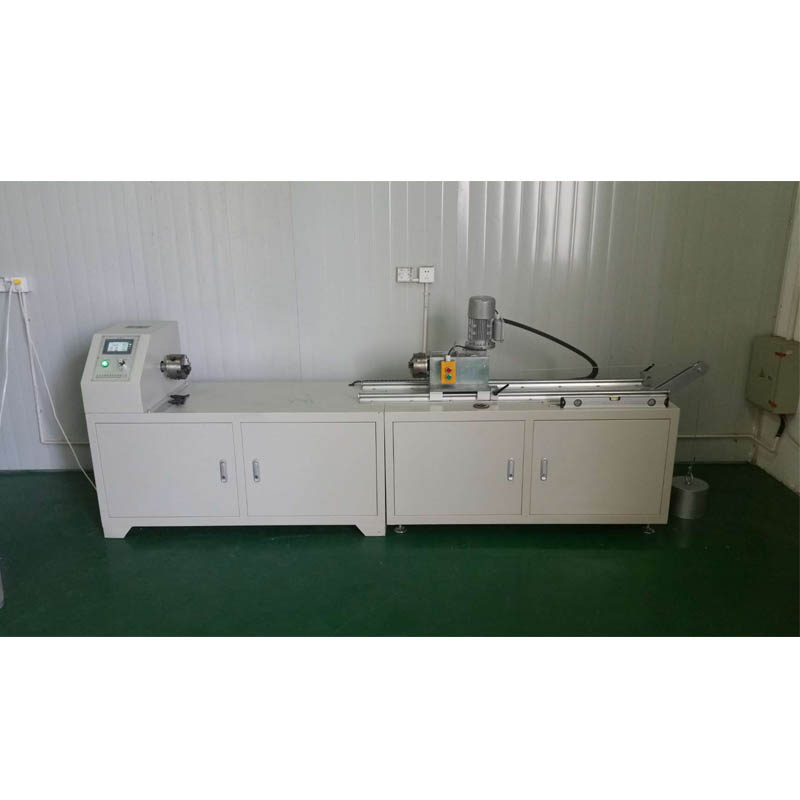Smoke Density Chamber Testing for Fire Safety Assessments and Quality Control
Understanding Smoke Density Chamber Testing An Overview for Exporters
Smoke density chamber testing plays a crucial role in assessing the fire safety of materials used in construction and manufacturing. As industries continue to expand globally, awareness of fire safety standards has become a critical concern for exporters. This article will explore the importance of smoke density testing, its methodology, and its implications for exporters dealing with fire-sensitive materials.
What is Smoke Density Chamber Testing?
Smoke density chamber testing is a standardized method used to evaluate the amount of smoke produced by a material when exposed to fire. The smoke density is measured in terms of optical density, providing insights into how much visibility might be compromised in the event of a fire. This information is vital for ensuring that the materials used in various applications do not pose an undue risk in emergency situations.
The tests are typically conducted in controlled environments using a smoke density chamber, which allows for consistent and repeatable results. Various standards, such as ASTM E662, outline the procedures for conducting these tests, specifying factors like sample size, test atmosphere, and measurement methods.
Why is Smoke Density Testing Important for Exporters?
1. Compliance with Regulations Many countries enforce strict fire safety regulations. Exporters must ensure that their products meet these standards to avoid fines, product recalls, or market withdrawal. Smoke density testing provides the necessary certification to demonstrate compliance with both local and international regulations.
2. Market Acceptance In many regions, particularly in Europe and North America, products are often required to undergo safety testing before they can be sold. By having smoke density testing results, exporters can enhance their products’ marketability. Positive test results can serve as a powerful marketing tool, reassuring customers about the safety and reliability of their purchases.
3. Risk Mitigation An understanding of the smoke density characteristics of materials can help exporters make informed decisions. It allows them to choose safer alternatives or improve formulations to reduce smoke production. Ultimately, this risk mitigation can protect businesses from potential liability and safeguard their reputations.
smoke density chamber test exporter

4. Quality Assurance Exporters who invest in smoke density testing demonstrate a commitment to quality assurance. Regular testing can help in maintaining the consistency of manufacturing processes, ensuring that products meet the desired performance standards throughout their lifecycle.
The Testing Process
The process of smoke density chamber testing typically involves the following steps
1. Sample Preparation The material to be tested is prepared in accordance with specific guidelines, which generally specify size and orientation.
2. Ignition A controlled ignition source is used to ignite the sample. The environmental conditions, such as temperature and oxygen concentration, are carefully monitored to ensure consistency.
3. Smoke Measurement As the material burns, the smoke produced is collected and the optical density is measured. This measurement helps determine the visibility and toxic exposure risks associated with the smoke.
4. Data Analysis The collected data is analyzed and compared against established benchmarks. The test results are then compiled into a report detailing the performance of the material in terms of smoke density.
Conclusion
For exporters, understanding and implementing smoke density chamber testing is essential in today’s competitive and safety-conscious global market. It not only ensures compliance with various regulations but also enhances product reputation, mitigates risks, and maintains high-quality standards. As fire safety regulations continue to evolve, exporters who prioritize smoke density testing will be better equipped to navigate the complexities of international markets and provide safer products for their customers. In this way, investing in smoke density testing is not just about compliance; it is a strategic decision that can lead to greater market opportunities and consumer trust.
-
Why the Conductor Resistance Constant Temperature Measurement Machine Redefines Precision
NewsJun.20,2025
-
Reliable Testing Starts Here: Why the High Insulation Resistance Measuring Instrument Is a Must-Have
NewsJun.20,2025
-
Flexible Cable Flexing Test Equipment: The Precision Standard for Cable Durability and Performance Testing
NewsJun.20,2025
-
Digital Measurement Projector: Precision Visualization for Modern Manufacturing
NewsJun.20,2025
-
Computer Control Electronic Tensile Tester: Precision and Power for the Modern Metal Industry
NewsJun.20,2025
-
Cable Spark Tester: Your Ultimate Insulation Assurance for Wire and Cable Testing
NewsJun.20,2025
 Copyright © 2025 Hebei Fangyuan Instrument & Equipment Co.,Ltd. All Rights Reserved. Sitemap | Privacy Policy
Copyright © 2025 Hebei Fangyuan Instrument & Equipment Co.,Ltd. All Rights Reserved. Sitemap | Privacy Policy
